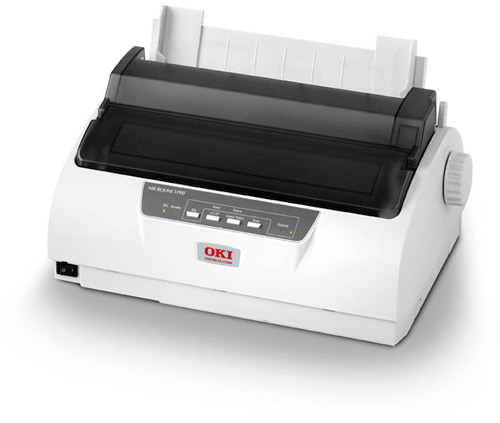What is a Dot Matrix Printer?

Last Updated on August 14, 2023 by Christian Ralph
Whilst the majority of printers in the home or office utilise laser or inkjet technology, dot matrix printers continue to carve out a niche in the market for themselves and attract devoted followers. Closing in on its 50th anniversary, dot matrix technology may seem slightly crude compared to some of its more recently-innovated brethren but it’s still more than capable of holding its own.
Here we take a little stroll through history to explore how dot matrix printers work, how the technology was developed and who continues to use the machines.
How Dot Matrix Printing Works
Ink is administered to the paper in dots via a series of tiny metal pins which are driven forward through an ink-soaked ribbon by the power of electromagnets or solenoids. The pins are traditionally located on a moving mechanism called the print head which will move from left to right to generate text. Up to 48 pins may be moving simultaneously to speed up the process of creating the printed output.
The pattern of the administration of the ink is determined by the computer, re-creating the on-screen text in a series of dots. This technology is similar to that found in many laser, inkjet and thermal printers – although it is not customary to include them under the umbrella term of dot matrix printers.
Traditionally very durable machines, dot matrix printers were widely favoured between the 1970s and 1990s due to their reliability and long life.
A Brief History of Dot Matrix Printing
First introduced onto the market by OKI in 1968, the original machine was known as the OKI Wiredot. This was then improved upon by the Digital Equipment Corporation of Maynard, Massachusetts who created the DEC LA30 in 1970, which was capable of printing 30 characters every second.
Four years later, the LA30 was followed by the LA36 which achieved far greater commercial success – becoming a standard for dot matrix technology in the process until 1979 when Epson got involved.
The Epson MX-80 was the all-important ground-breaking model which really sparked interest in home printers. Affordable and capable of top print quality (for the time period), the MX-80 proved to be hugely popular at a time when the personal computer market was really starting to blossom.
Two years later, Epson released the EPROM kit which was designed to allow MX-80 printers to print graphics – something which was previously unachievable for affordable home printers. Over the years, the quality of the text, speed of the output and overall performance continued to improve – remaining popular throughout the 80s and the early 90s.
However, as laser and inkjet printers became more affordable in the late 90s, many people switched to this technology due to the printers’ capacities to produce more detailed prints.
Who Uses It?
Despite the decline in popularity over the past two decades, it’s not all bad news for dot matrix printers – they are still utilised in a number of industries. The low cost per page, incredible durability and constant reliability means they are popular with workplaces which require a huge volume of black and white text prints.
Furthermore, dot matrix printers’ ability to print on continuous paper means they continue to be popular with data collection professionals.
At Printerland, we stock a comprehensive selection of dot matrix printers, which can be found here. Alternatively, if you’re just here to spruce up your knowledge of dot matrix technology but would rather buy a laser or inkjet machine, visit our homepage or call our dedicated team on 0800 840 1992.

